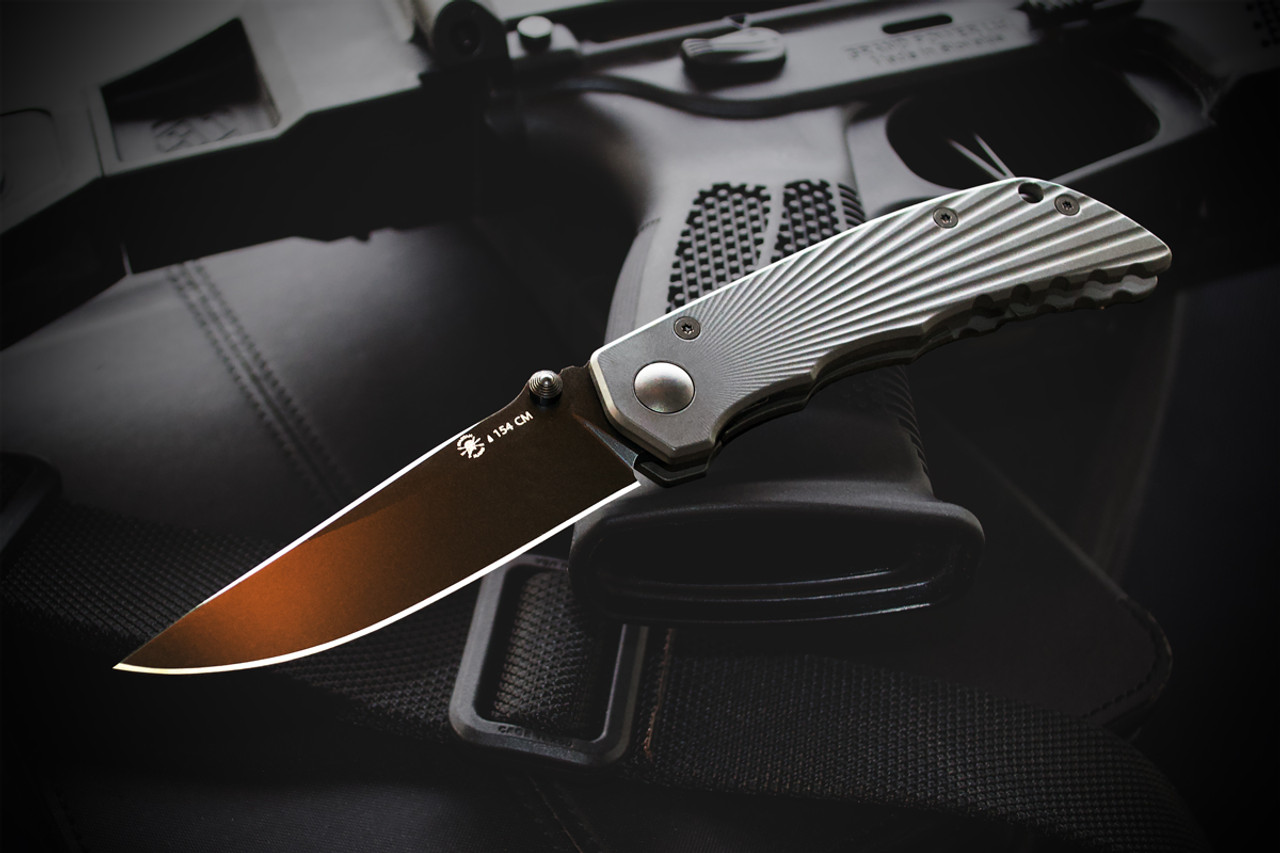For kitchen professionals, the tools you wield are mere extensions of your culinary expertise. Among these, the often-overlooked folding knife is a powerful ally. Grasping the nuances of blade grinds in folding knives can greatly enhance your cutting efficiency and accuracy.
Blade grinds refer to the cross-sectional shapes of a knife's blade, which are vital in determining its cutting capability. This article aims to explore the various blade grinds you commonly encounter with folding knives, along with how they can elevate your performance in a professional kitchen setting.

What Are Blade Grinds?
In the knife world, particularly concerning folding knives, 'blade grind' indicates the shape of the blade's cross-section. This configuration influences how a knife performs in cutting tasks, its strength, and overall usability. For those in the culinary field, understanding these grinds could mean the difference between a flawlessly sliced item and a culinary disaster.
Multiple elements, such as edge angle and blade thickness, affect the knife's cutting effectiveness. By exploring the different types of blade grinds in folding knives, you can make educated choices concerning the ideal tool for particular kitchen responsibilities.
Common Blade Grinds in Folding Knives
Flat Grind
The flat grind stands out as one of the most adaptable and widely used options in folding knives. With a straight taper from the spine to the edge, it creates a uniformly thin blade. This grind suits kitchen professionals who need precision in tasks like slicing and dicing. Its slender edge allows easy slicing through ingredients, making it perfect for vegetables and delicate cuts of meat. Folding Knife Basics
Nevertheless, the flat grind might not be the best fit for heavy-duty tasks, as its delicate edge can be susceptible to chipping. For chefs prioritizing precision, however, the flat grind remains a dependable choice.
Hollow Grind
The hollow grind showcases a concave shape, resulting in a sharp and thin edge. This grind excels in precision tasks like filleting fish or trimming fat. Kitchen experts who often require fine, precise cuts will find the hollow grind's ability to maintain a sharp edge with minimal effort quite appealing.
While the hollow grind provides remarkable sharpness, it may not offer the same durability as other grinds, making it more suitable for tasks requiring finesse rather than brute force.
Saber Grind
The saber grind is characterized by its sturdy design, making it an excellent choice for heavy-duty kitchen tasks. This grind features a flat bevel that begins partway down the blade and provides robustness and durability. Chefs dealing with tougher ingredients, such as bones or frozen foods, will appreciate the saber grind as a reliable option.
Though strong, the saber grind might not match the precision of some other grinds. It is ideally used for tasks where durability takes precedence over finesse.
Chisel Grind
However, maintaining the chisel grind can be challenging due to its continuous need for sharpening. Chefs capable of dedicating time to maintain the edge will find this grind an invaluable asset.
Selecting the Right Blade Grind for Your Folding Knife
Picking the perfect blade grind for your folding knife is contingent on the types of tasks you most frequently perform in the kitchen. Here are some suggestions to assist you in deciding:
- Reflect on the kinds of ingredients you regularly handle. For more delicate cuts, consider a flat or hollow grind. For tougher foods, a saber grind could be more appropriate.
- Assess your cutting style. Do you value precision or durability more? This will impact the grind that aligns best with your needs.
- Keep maintenance in mind. Certain grinds, like the chisel grind, call for more care than others. Be honest about your willingness to maintain the blade's edge.
Wrapping Up
Grasping the various blade grinds in folding knives can markedly improve your operational efficiency and capabilities as a kitchen professional. By carefully selecting the correct grind tailored to your specific tasks, you can ensure you're maximizing your cutting precision and allowing your tools to perform at their best.
For more insights into knife types and applications, visit [Knafs](https://www.knafs.com/pages/pocket-knife-blade-shapes) and explore this excellent resource.

FAQs
1. Which blade grind is best for precision tasks?
The hollow grind is widely revered for precision tasks due to its incredibly sharp edge.
2. How often should I sharpen my folding knife?
Sharpening frequency depends on the grind and usage, but maintaining your knife is key to its performance.
3. Can folding knives be employed for rigorous kitchen duties?
Absolutely, especially those featuring a saber grind, known for their durability and strength.
This article contains affiliate links. We may earn a commission at no extra cost to you.


























